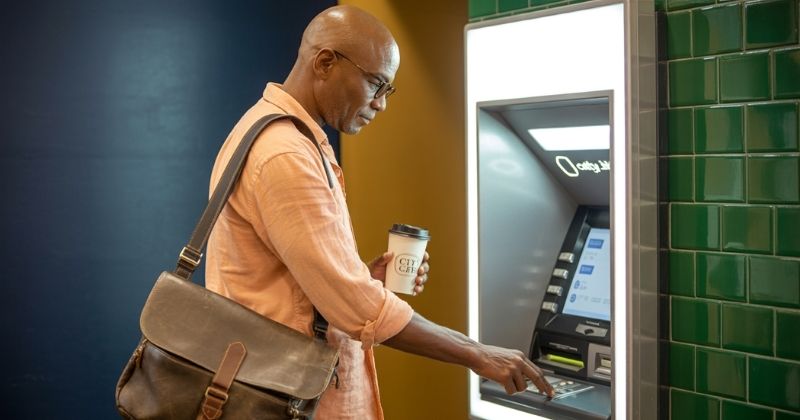
The most recent edition of BankservAfrica’s Take-home Pay Index indicates that the level of disposable income in South Africa has reached a point of stability after experiencing three consecutive months of moderation. This trend, viewed over a six-month period, points towards the possibility that 2025 could turn out to be a comparatively favourable year for salary earners. This stabilisation offers a rare moment of financial breathing room for households that have been navigating tight budgets and rising living costs since the pandemic-era economic strain.
Key Takeaways
- Disposable income and real salaries are improving: South African take-home pay has shown year-on-year growth, supported by declining inflation and marginal real salary increases. The average nominal take-home pay in June 2025 reached R17,310, significantly higher than the previous year.
- Inflation relief is supporting earnings and interest rates: With headline CPI at 3% in June 2025 and further interest rate cuts expected, salary earners are experiencing increased purchasing power and lower debt burdens, offering some financial relief after years of strain.
- Economic risks remain despite salary improvements: While consumer spending remains strong, ongoing challenges such as high unemployment, weakened confidence, and trade tensions with the US could threaten job security and income stability in the months ahead.
About Arcadia Finance
Get your loan the easy way with Arcadia Finance. Compare offers from 19 trusted lenders, all registered with South Africa’s National Credit Regulator. No application fees, just a fast and reliable process tailored to your needs.
Stability Driven by Lower Inflation Rather Than Economic Strength
The observed improvement in take-home pay figures is, however, largely attributed to the easing of inflationary pressures and a reduction in interest rates, rather than an actual improvement in the underlying economic environment. The broader economic landscape continues to exhibit signs of weakness, raising concerns about the sustainability of the current trend in salary growth. While consumers may feel temporary relief, economists warn that the lack of structural reforms and slow job creation pose long-term risks.
According to BankservAfrica, the nominal average take-home salary stood at R17,310 for the month of June 2025. This reflects a minor month-on-month decrease of 0.1 percent from May’s average of R17,325. Nonetheless, when compared to figures from the previous year, this number marks a significant increase from the R15,514 recorded in June 2024, highlighting a notable annual improvement.
The strong year-on-year increase reflects a recovery in salary growth momentum, suggesting that employers across certain sectors may have responded to inflation concerns with upward wage adjustments.

Inflation-Adjusted Income Also Shows Encouraging Year-on-Year Growth
When factoring in the effects of inflation, real take-home pay dipped slightly by 0.2 percent month-on-month, declining from R14,827 in May to R14,804 in June 2025. Despite this modest drop, the inflation-adjusted figure still sits comfortably above the levels recorded at the same time last year, offering further confirmation that average South African households are in a better financial position than they were in 2024. This improvement, although small, could translate into increased discretionary spending, particularly in retail and essential services, which fuels local economic activity.
BankservAfrica remarked that while the first six months of 2025 have collectively painted an optimistic picture for salaries, this trend is now under threat from a worsening economic outlook. Several macroeconomic challenges, both domestic and global, have emerged in recent months, clouding the outlook for the remainder of the year. The sustained threat of global commodity shocks and load-shedding interruptions could reverse recent gains if not adequately addressed by policymakers.
As wage patterns continue shifting nationwide, the Major Shift Ahead for South Africans Earning R5k to R20k report offers a deeper look into how changing income bands will affect households, budgeting power and long term financial wellbeing.
Consumer Price Index Slows, Boosting Spending Power
One of the most encouraging developments has been the significant moderation in consumer inflation throughout 2024, which has continued into the current year. This has strengthened the purchasing power of South African salary earners. The most recent Consumer Price Index (CPI) for June 2025 came in at only 3 percent, indicating that cost pressures on households have eased considerably.
Lower inflation has also provided relief for those servicing debt, as monthly repayments on loans and credit facilities are no longer eroded by constant price increases.
Best Salary Growth Since 2015 Recorded in 2024
Following several years of stagnant or declining real incomes, the year 2024 turned out to be the most beneficial for salary earners since 2015. During this period, average real take-home pay grew by 1.5 percent, providing welcome relief to households that had been battling rising costs and sluggish wage growth. This level of growth, though modest by global standards, marks a turning point for many middle-income earners who have been under pressure from static wages and growing financial obligations.
Independent economist Elize Kruger has projected that inflation will average approximately 3.5 percent in 2025, down from an already improved 4.4 percent in 2024. At the same time, industry data points towards average salary increases exceeding 5 percent this year, indicating that real income growth may remain strong through the remainder of the year.
These figures offer cautious optimism that workers may regain some of the purchasing power lost over the past three years.

Interest Rate Relief Expected to Support Consumer and Market Confidence
Beyond the salary gains, the subdued inflation environment has also given the South African Reserve Bank room to consider further interest rate cuts. Economists anticipate that the Monetary Policy Committee may announce a 25-basis-point rate cut during its upcoming meeting on Thursday, 31 July. However, this may be the final cut in the current cycle. Should the central bank decide to pause in July, analysts believe there may still be one more cut in September, though no further reductions are expected beyond that. Lower interest rates are expected to ease repayment burdens on home loans and car finance, offering some liquidity to over-indebted consumers.
Lower Rates Could Support Consumer Spending and Key Markets
Any reduction in interest rates would bring additional relief to heavily indebted consumers. It would also be expected to support sectors such as property, which is already showing early signs of recovery as consumer confidence begins to return in certain areas. Developers and estate agents have already reported increased enquiries and sales volumes in mid-tier housing markets, signalling renewed activity.
If you want a broader context for the gains being made by salary earners this year, check out Encouraging News for South Africans Receiving a Salary, it highlights how average monthly earnings rose 5.6 % between February 2024 and February 2025, outpacing inflation and offering a modest real increase in disposable income.
Economic Uncertainty Persists Despite Positive Signs in Spending
BankservAfrica acknowledged that 2025 has been marked by considerable economic volatility. A variety of external pressures, including geopolitical tensions, global trade disruptions, and disputes over tariffs, continue to weigh on investor sentiment. Despite these challenges, consumer spending has remained robust, which is a critical pillar for South Africa’s consumption-driven economy. The resilience in spending may be linked to deferred consumption during prior high-inflation periods now being released into the economy.
Household Consumption Grows Despite Slipping Confidence Levels
Even though business and consumer confidence indicators weakened in the first quarter of the year, BankservAfrica reported that the level of real final consumption expenditure by households had grown by 2.8 percent compared to the same quarter a year earlier. This suggests that consumer activity remained resilient in the face of deteriorating sentiment. This resilience is helping to buffer the broader economy against a sharp downturn, even as corporate investment remains subdued.
Retail Sector Shows Continued Momentum into the Second Quarter
Early data released by Statistics South Africa further reinforces this trend, showing that real retail sales rose by 4.3 percent during the first five months of 2025. This is viewed as an encouraging indicator of continued consumer demand. Spending increases were particularly notable in essential goods, electronics, and clothing, indicating a broader revival in shopping activity.

Growth Forecasts Revised Downward Amid Uncertainty
Nonetheless, broader economic prospects have taken a turn for the worse. Revised forecasts, both domestically and globally, suggest a more subdued outlook for growth in the months ahead. Heightened uncertainty has contributed to declining confidence and a reluctance among businesses to commit to new investments. Concerns over energy reliability, fiscal discipline, and geopolitical risks have led many companies to adopt a wait-and-see approach to capital deployment.
Employment and Income Levels May Come Under Pressure
BankservAfrica cautioned that the softening economic environment could place additional strain on employment figures and income levels later in the year. This is especially concerning given that the national unemployment rate remains critically high at 32.9 percent, placing many households in a financially vulnerable position. A slowdown in job creation could quickly reverse the recent salary gains, particularly in sectors heavily dependent on global trade or domestic construction.
Tensions with the United States Add to Trade Concerns
Further complicating matters are rising diplomatic tensions between the South African and United States governments. Ongoing uncertainty regarding the future of trade tariffs beyond 1 August poses a significant risk to the country’s export potential. This is especially true for key industries such as automotive manufacturing and agriculture. A deterioration in trade relations could jeopardise South Africa’s eligibility for preferential trade programmes, further undermining business confidence and employment.
Kruger warned that it is vital for the South African government to prioritise diplomatic discussions with the United States in order to secure a favourable trade framework. Failure to do so could result in substantial job losses in export-reliant sectors, which would further damage the country’s already fragile labour market. Industry bodies are calling for a coordinated government response to stabilise trade relations, arguing that thousands of jobs and billions in export revenue hang in the balance.
Conclusion
Although 2025 has so far presented a more favourable climate for South African salary earners, with inflation easing and nominal wages improving, the broader economic backdrop remains uncertain. While households have enjoyed some relief through increased disposable income and the prospect of lower interest rates, persistent challenges, such as high unemployment, weak investment sentiment, and trade uncertainties, continue to cast a shadow. Sustaining the current progress will depend heavily on diplomatic efforts, structural reforms, and stable economic management through the rest of the year.
Fast, uncomplicated, and trustworthy loan comparisons
At Arcadia Finance, you can compare loan offers from multiple lenders with no obligation and free of charge. Get a clear overview of your options and choose the best deal for you.
Fill out our form today to easily compare interest rates from 19 banks and find the right loan for you.


